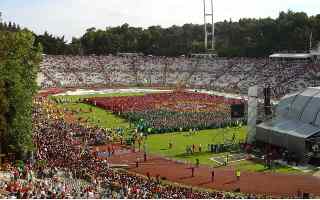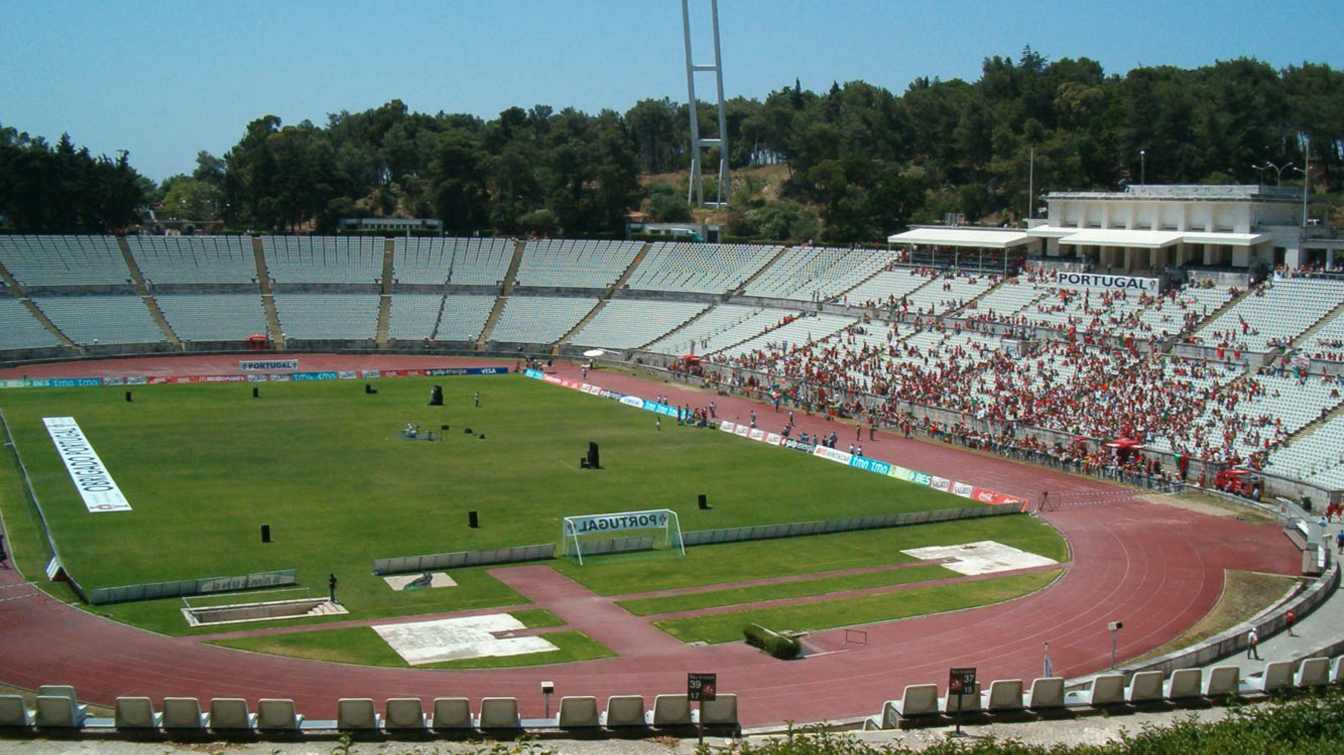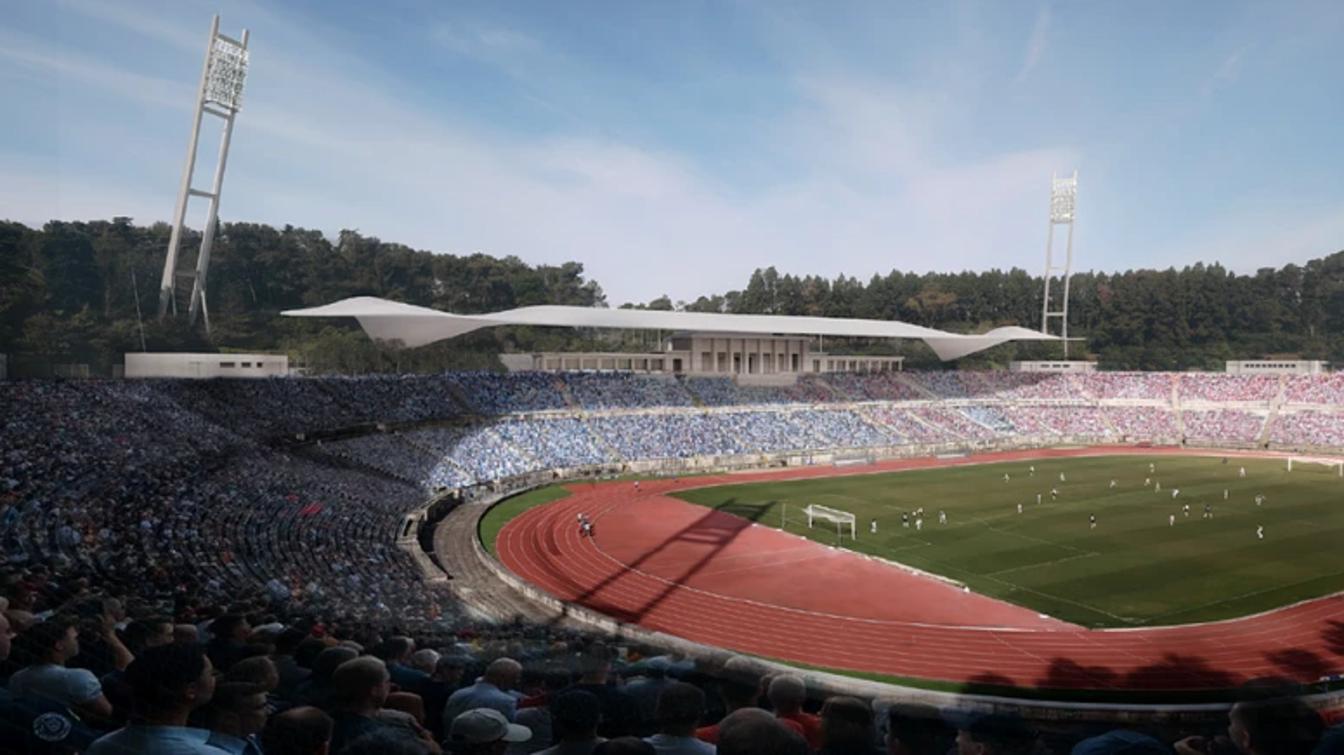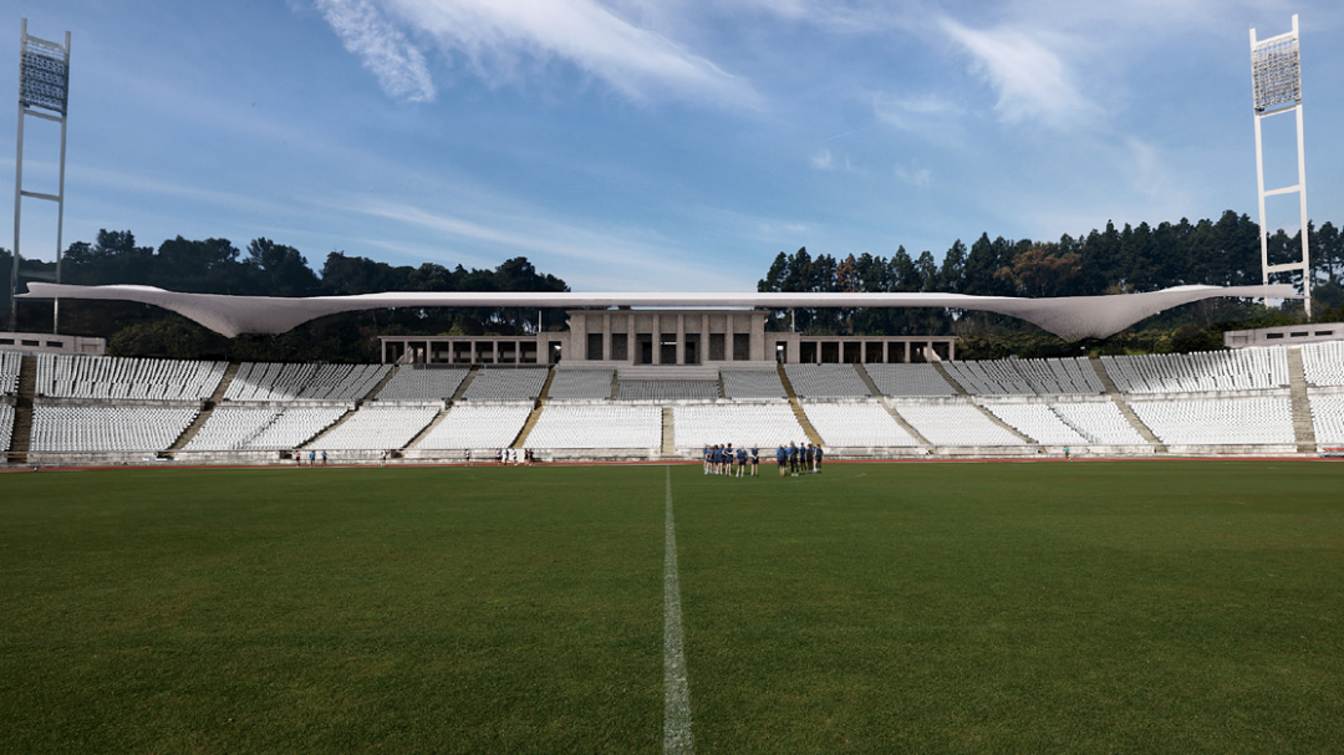Portugal: Forgotten national stadium will finally undergo modernization
source: StadiumDB.com; author: Paulina Skóra
 After a year-long competition, the modernization project for Estádio Nacional has finally been selected. The start date for construction has not yet been determined, but there is hope that the stadium will be used during the 2030 World Cup.
After a year-long competition, the modernization project for Estádio Nacional has finally been selected. The start date for construction has not yet been determined, but there is hope that the stadium will be used during the 2030 World Cup.
Advertisement
Renovation without altering the original design
Portugal’s National Stadium will undergo its first major modernization in history, as revealed on January 13. The jury, composed of representatives from the Portuguese Football Federation, IPDJ, Patrimonio Cultural da IP, the Oeiras City Council, and the Bar Association, selected a proposal from the consortium Aires Mateus III, Atherden Fuller Leng, and Gonçalves Vieira-Cruz, coordinated by architect Manuel Aires Mateus.
The primary objective of the project is to modernize the facility without making significant changes to its original architectural design, which is considered a work of art. For this reason, no changes are planned to the structure itself, only to its surroundings and accessibility. Access roads and entrances will be upgraded, along with facilities for people with reduced mobility. Additionally, some of the stadium’s most criticized features—such as the bathrooms—will be improved. We will finally have a proper number of restrooms, bars, and other support spaces for events like the Portuguese Cup final. The National Stadium will no longer feel incomplete but instead meet modern standards,
explained Manuel Aires Mateus, the lead architect.
 © Koshelyev (CC BY-SA 3.0) | Portugal’s National Stadium is a little-known venue outside the country’s borders
© Koshelyev (CC BY-SA 3.0) | Portugal’s National Stadium is a little-known venue outside the country’s borders
Will it be ready for the World Cup?
The renovation aims to address fan complaints, but one issue will remain unresolved for most of the stadium: the lack of protection from rain, wind, or cold due to the absence of full roofing. Jamor 2.0 will feature a large roof over the presidential stand, but extending it to cover the entire stadium is beyond the scope of the project. According to Aires Mateus, such an idea is nearly impossible to implement. However, the new roof will come alive at night with integrated lighting, a feature included in the design. The project also greenlights the construction of a new lounge at the VIP entrance and a new parking lot.
For now, there is no timeline for when construction will begin or end, but the project is moving into the implementation phase. None of the authorities present at the January 13 presentation, held at the Bar Association headquarters, committed to a specific schedule. However, there is optimism surrounding the 2030 World Cup. António Laranjo, head of the Iberian-Moroccan World Cup bid and chair of the jury that selected the project, expressed confidence that if completed on time, Jamor will be a valuable facility for the tournament. I have no doubt that this stadium will be ready to serve as one of the training centers for one of the participating teams,
he said.
 © FPF | The new National Stadium could be used as a training center during the World Cup.
© FPF | The new National Stadium could be used as a training center during the World Cup.
Returning the stadium to the people?
Before the 2030 World Cup, Estádio Nacional will serve many other purposes. Isaltino Morais, Mayor of Oeiras, spoke about this during the project’s presentation. While praising the project and the cooperation involved, he also criticized recent governments for their management of the stadium and for limiting its use exclusively to national
functions.
Democracy arrived very late at Estádio Nacional. The stadium was always seen by national sports officials as a kind of private playground for government-appointed administrators. Naturally, there was resistance to making the stadium accessible to the public. Because it was ‘national,’ it was reserved for national events. It was essentially a blemish,
summarized the mayor. Now, hopes for a democratized Jamor are higher, with plans to make the stadium more accessible to citizens.
Citizen involvement in the project will also be reflected in public funding. The total cost of the renovation is €25 million, a figure determined before the competition was launched. Six percent of this sum will be covered by the state, exclusively for the project’s design phase.
 © FPF | The facility is designed to be more accessible to citizens.
© FPF | The facility is designed to be more accessible to citizens.
Advertisement

 StadiumDB
StadiumDB